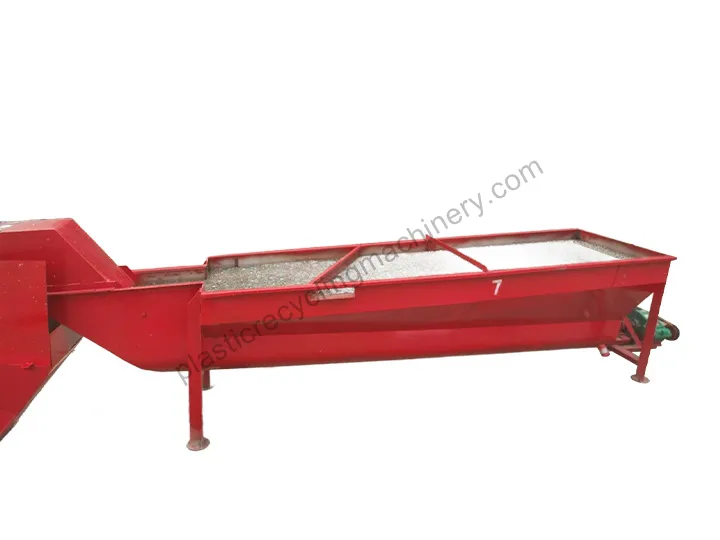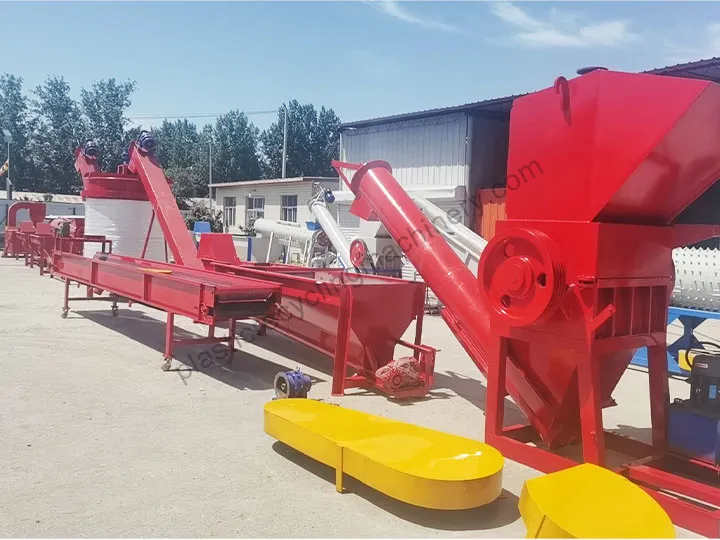Pemisahan plastik sink float adalah peralatan yang biasa digunakan untuk pemisahan kepadatan dalam proses daur ulang plastik. Peralatan ini secara efektif memisahkan sampah plastik tercampur dengan memanfaatkan perbedaan kepadatan berbagai bahan di dalam air. Biasanya digunakan pada jalur pencucian PET untuk memisahkan label dan tutup dari serpihan botol PET.
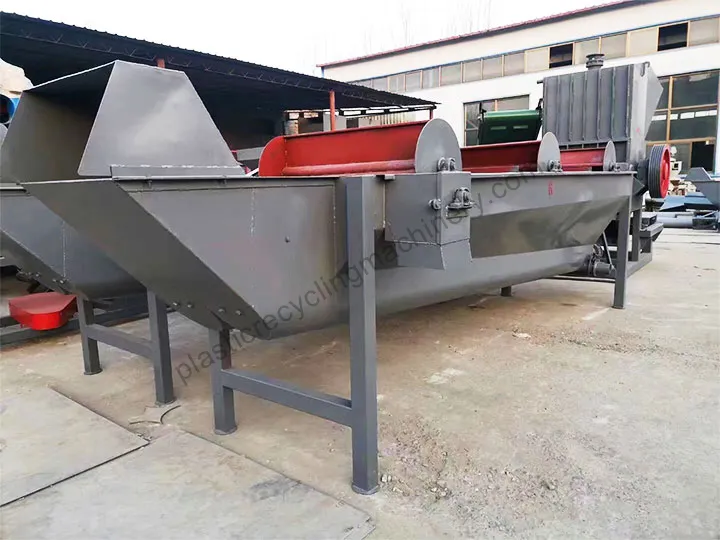
Fitur Pemisahan Plastik Sink Float
- Pemisahan Efisien: Tangki pemisahan pelampung wastafel menggunakan teknologi kepadatan untuk secara efektif memisahkan potongan botol plastik dari kotoran, memastikan kemurnian potongan botol.
- Baja Tahan Karat: Peralatan ini terbuat dari baja tahan karat berkualitas tinggi dengan ketahanan korosi dan daya tahan yang sangat baik.
- Lokasi fleksibel: tangki wastafel pelampung plastik memiliki desain yang fleksibel dan dapat diatur secara wajar sesuai dengan tata letak pabrik dan persyaratan lini produksi untuk memaksimalkan efisiensi produksi.
- Berbagai gaya untuk dipilih: Tergantung pada kedalaman tangki pembersih, ada berbagai gaya untuk dipilih. Untuk bahan botol PET yang lebih ringan, disarankan untuk memilih tangki pemisah yang lebih dalam untuk memastikan pemisahan yang lebih baik.
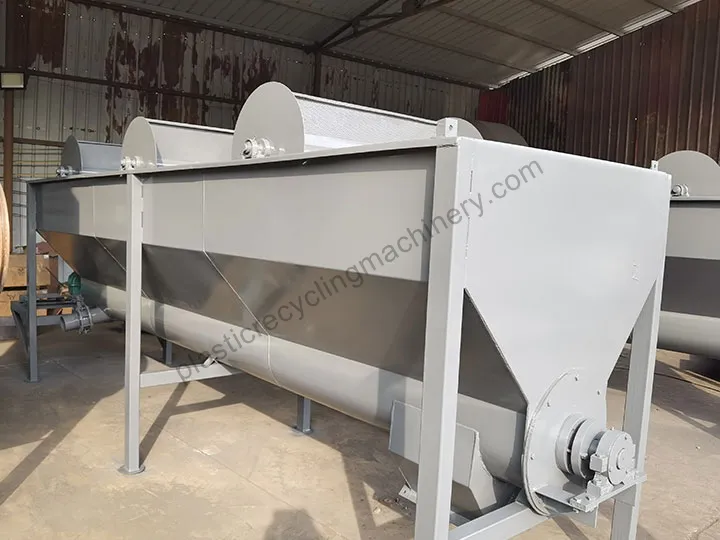

Prinsip Kerja Tangki Cuci
Prinsip kerja pemisahan plastik sink float didasarkan pada perbedaan densitas. Pemisahan ini dicapai dengan menciptakan gaya apung yang berbeda di dalam air; Serpihan PET biasanya lebih padat daripada air, sehingga serpihan PET tenggelam ke dasar, sedangkan bahan yang lebih ringan, seperti label dan tutup botol, mengapung ke permukaan.
Serpihan botol PET yang tenggelam ke dasar bak dipindahkan ke langkah pemrosesan berikutnya melalui konveyor sekrup di bagian bawah. Floater dibuang melalui outlet pembuangan belakang untuk pemisahan yang efektif.
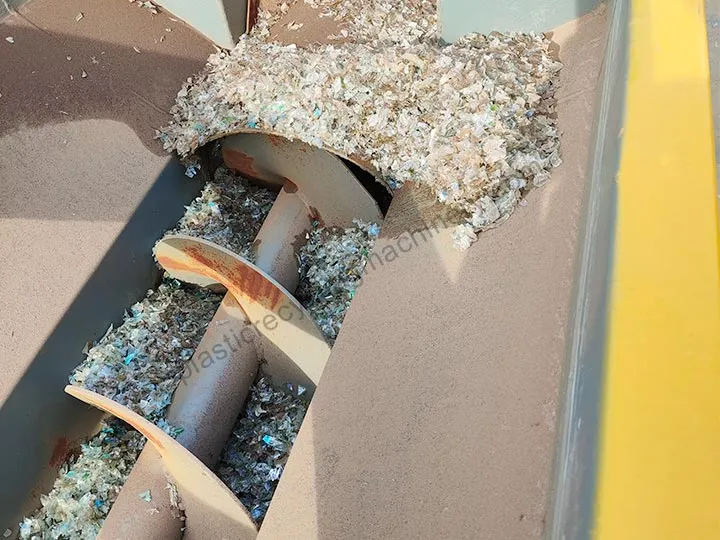
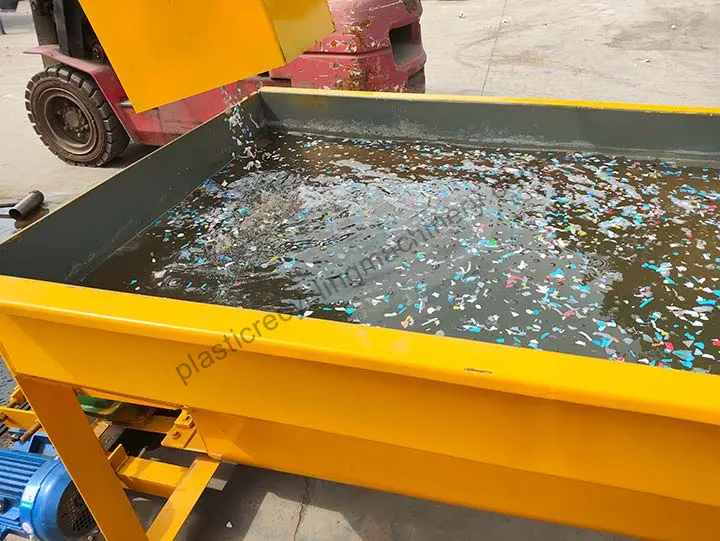
Jumlah Tangki Wastafel Apung Plastik
Untuk saluran pencucian botol plastik dengan keluaran 500kg/jam-1000kg/jam, kami sarankan memasang dua atau tiga pemisah plastik pelampung wastafel, sedangkan untuk saluran pencucian dengan keluaran lebih dari 1000kg/jam, kami sarankan memasang tiga atau empat.
Tangki pemisahan pertama biasanya dipasang setelah penghancur dan terutama digunakan untuk memisahkan tutup dan label dari serpihan botol PET. Tangki cuci lainnya dipasang setelah mesin cuci panas mengelupas PET, yang tidak hanya dapat memisahkan kotoran lagi tetapi juga membersihkan sebagian alkali atau bubuk pembersih, mengontrol pH hingga kurang dari 8 untuk memastikan efek pembersihan.
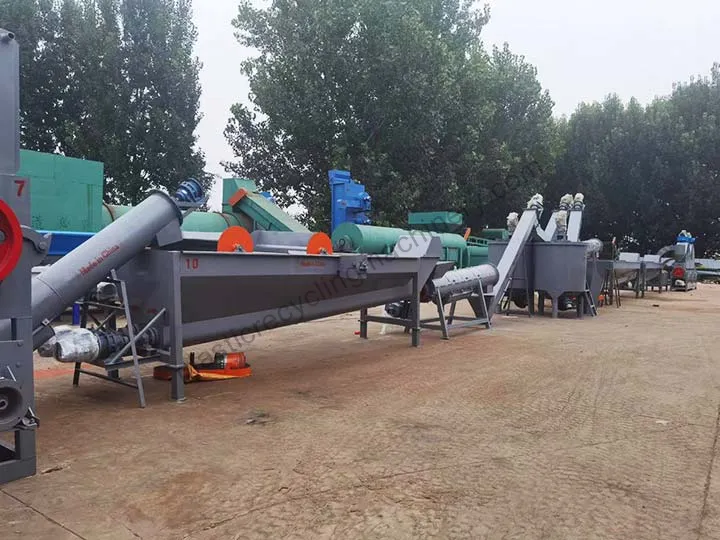
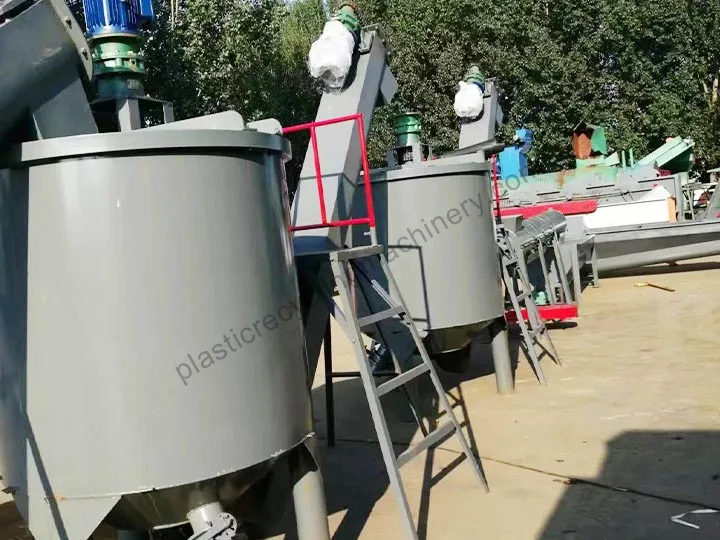
Parameter Tangki Pemisahan Apung Tenggelam
| Nama barang | Mesin cuci botol PET |
| Model | kecil |
| Ukuran | dapat disesuaikan |
| Bahan yang cocok | baja tahan karat |
| Tenaga motorik | 3kw |
| Lingkup aplikasi | untuk mencuci PP, PE, PET |
Pemisahan plastik pelampung wastafel kami tersedia dalam berbagai model, memungkinkan pelanggan memilih antara tangki yang lebih dalam atau model yang dilengkapi roda dayung, tergantung pada karakteristik bahan atau kebutuhan pelanggan. Tangki yang lebih dalam sangat cocok untuk serpihan botol PET yang lebih ringan, sedangkan desain roda dayung memungkinkan material didorong ke depan selama proses pembersihan, sehingga meningkatkan efisiensi pemrosesan.
Harga Mesin Cuci Keripik Plastik
Harga mesin cuci keripik plastik bervariasi berdasarkan model, ukuran, dan fitur tambahan. Kami mendorong Anda untuk menghubungi tim penjualan kami untuk mendapatkan penawaran yang dipersonalisasi. Profesional kami akan memberikan informasi rinci tentang kebutuhan Anda dan menawarkan harga yang paling kompetitif.
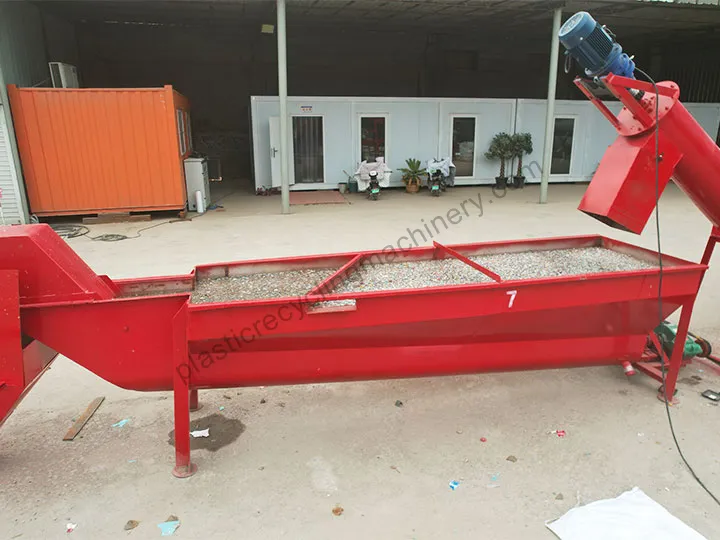
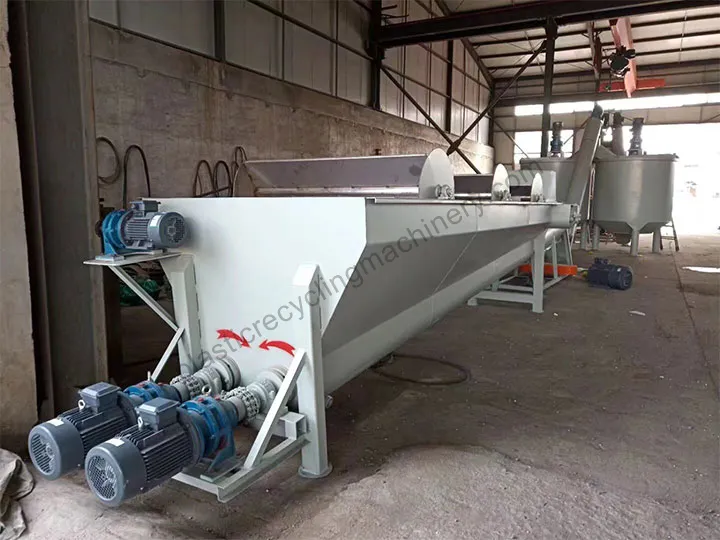
Jalur Daur Ulang Botol PET yang Direkomendasikan
Untuk hasil daur ulang terbaik, kami merekomendasikan garis daur ulang botol PET dengan pemisahan plastik tenggelam terapung. Ini dapat diintegrasikan dengan peralatan lain seperti penghancur botol plastik, tangki pencucian panas, dan pengering plastik untuk membangun sistem daur ulang botol PET yang sangat otomatis. Tim kami yang berdedikasi dapat memberikan saran yang disesuaikan untuk memenuhi kebutuhan produksi Anda.

